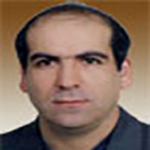Previous and New Interventions in Architectural Heritage, Explaining Value Approaches in a Historical Course (from 1309 to 1355 SH.)
After the Constitutional Revolution and increasing the importance of cultural heritage, followed by forming the National Monuments Association in the early contemporary century and ratifying the set of principles in the Antiquities Law of 1309 SH., more grounds were created to protect the historical monuments. When the Department of Antiquities was established, repairing historical monuments in the center of the country was assigned to this department, and in other areas to determined archeological departments. Then since the middle of the 1340s SH, and establishing the National Organization for the Conservation of the Historical Monuments, the context was created to introduce new concepts which produce new theoretical requirements. The present paper seeks to find out what value approaches or theoretical requirements had been achieved by the activities of the National Monuments Association and the Antiquities Law. Then, after understanding the rotations that have taken place in value approaches by joining new currents of conservation and restoration, occurrences happened between previous procedures and new approaches will also be explored. This research which has been done through a qualitative and interpretive approach, will describe the issues and then the results will be explained by logical reasoning, after the content analysis of the data obtained from reports and historical sources. The research findings indicate that in the procedures taken by the Department of Antiquities and Maārif branches; it is possible to find the Awareness to the historical nature of the building alongside practical and functional priorities. In addition the functionalist tendencies rooted in intellectual and cultural traditions, the type of materials and construction techniques were such that the need for continuous repair and replacement of materials was inevitable. However, the value types of repairing done by the Department of Antiquities can be introduced in the form of approaches derived from tradition, eclectic approaches, and new value approaches. With the concepts derived from global conservation movement, after the establishment of the National organization for the conservation of the historical monuments, functionalist tendencies turned into Physical body priorities; So that, if in the previous procedures the general survival of the building while being effective and useful was considered; In the new concepts, the dominant view was based on the physical survival of the monument, taking into account aesthetic aspects. However, value approaches of internal groups, in spite of attention to these issues, included cultural tendencies and functionalism. Finally, it can be mentioned to confrontations based on contrasts in aesthetic views, differences of opinion on the way of intervention, adaption to local methods or Iranian tastes, and even similarities with some previous procedures in relation to stylistic restoration, which mostly derived from the cultural differences of societies in understanding and attitude towards architectural heritage.
- حق عضویت دریافتی صرف حمایت از نشریات عضو و نگهداری، تکمیل و توسعه مگیران میشود.
- پرداخت حق اشتراک و دانلود مقالات اجازه بازنشر آن در سایر رسانههای چاپی و دیجیتال را به کاربر نمیدهد.


